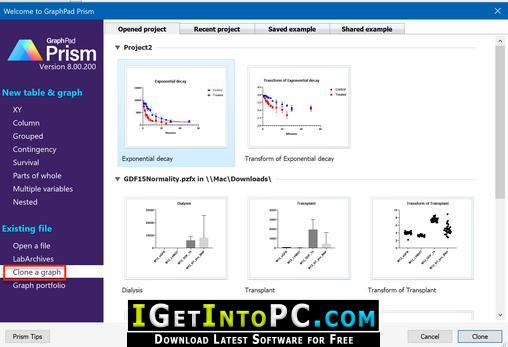

Due to such curbing of these existing drug interventions, the prospects of ascertaining new antidiabetic principles from the herbal origin are courtesy of diabetes management and/or prevention of its complications.

The third group of drugs is carbohydrate hydrolyzing enzyme inhibitors like α-glucosidase and α-amylase inhibitors. However, the carbohydrate hydrolyzing enzyme inhibitors are reported to have some gastrointestinal-related side effects like abdominal cramps, flatulence, bloating, intestinal disturbances, and diarrhea (Fujisawa et al. Pioglitazone like thiazolidinedione though has the capability to reduce the risk of IGT conversion to T2D, its prolonged use is associated with edema and conspicuous weight gain, which further may increase cardiovascular threats (Kole et al.

The second group of drugs enhances the sensitivity of insulin–thiazolidinedione and biguanide. Group one drugs that enhance the availability of insulin are sulfonylureas, while sulfonylureas often fail in the perfection of glycemic index and have some side effects like osteoporosis, obesity, and inhibition of hepatic regeneration (Iwaki et al. 2015). The prolonged and uncontrolled DM may accomplish fatal complications like nephropathy, cardiomyopathy, and retinopathy (Musabayane 2012).Īt present, DM is managed by three groups of drug interventions (Chinsembu 2019). Such long-term disturbances further evolve toward the development of multifaceted chronic disease like DM (Kumar et al. Noninvasive management of hyperglycemia is also done by carbohydrate hydrolyzing enzyme inhibitors like α-glucosidase inhibitors-acarbose and miglitol which help to control postprandial hyperglycemia (Ibrahim and Islam 2014). Postprandial metabolic overload induces oxidative stress, which could disturb normal cellular and metabolic functions by damaging biomolecules. The main line of therapy in diabetes emphasizes drugs that promotes insulin secretions and sensitizations. 2017). International Diabetes Federation (IDF) predicted that by the year 2030 about 552 million people in the world may be manifested as diabetic (IDF 2011). Controlling hyperglycemia is the first line of treatment in the management of diabetes mellitus (DM) in order to control the progression of further diabetic-related complications.

T2D is a disease characterized by advances in insulin resistance and β-cell dysfunction leading to hyperglycemia (Kishore et al. Type 2 diabetes (T2D) is more prevalent than type 1 diabetes, with over 90% of total diabetes cases. ConclusionsĮMZSB-250 showed significant antidiabetic effects and ameliorated diabetic complications by improving glycemic control and accompanying biochemical alteration. A preliminary antidiabetic study with EMZSB-250 mg kg −1 in normal rats showed no sign of hypoglycemia however, a dose-dependent antihyperglycemic effects were observed in oral glucose tolerance test in glucose-loaded rats. In vivo assessment with EMZSB-250 mg kg −1 in alloxan-induced rats demonstrated significant blood glucose-lowering effects with perfection in serum lipid profile, body weight enhancement, cardiovascular risk indices, nephroprotective effects, augmentation in liver glycogen content, and histopathological evidence of normal architecture of kidneys with no marks for nephritis. Further, EMZSB demonstrated high in vitro α-glucosidase enzyme inhibition potential (IC 50 = 119.79 ± 1.52 µg/mL) than AEMZSB (IC 50 = 129.92 ± 2.29 µg/mL) with a significant difference ( p < 0.01), when acarbose was taken as reference inhibitor (IC 50 = 86.43 ± 1.26 µg/mL). During acute toxicity studies EMZSB was safe up to 2000 mg kg −1 doses while, found causing moribund status followed by mortality in mice at 3000 mg kg −1 and above doses. Royen stem bark (AEMZSB), while ascorbic acid was taken as the standard. EMZSB has elucidated a considerable in vitro free radical scavenging potential by DPPH and H 2O 2 assays when compared with absolute ethanolic extract of Manilkara zapota (L) P. With a maximum extractive yield of 9.16% w/w, EMZSB has shown the presence of various phytochemicals like flavonoids, phenolic compounds, tannins, anthraquinone glycosides, steroids, terpenoids, and alkaloids. Royen stem bark (EMZSB) in DPPH- and H 2O 2-scavenging assay, in vitro α-glucosidase inhibition assay, ameliorating diabetes and its complications in alloxan-induced diabetes in Wistar rats. Thus, the present study aimed to investigate the effects of 70% ethanolic extract of Manilkara zapota (L) P. Royen stem bark (MZSB) is enriched with several bioactive phytoconstituents but had not been yet screened for its in vitro and in vivo antidiabetic potentials. A perusal of the literature suggested that Manilkara zapota (L.) P.


 0 kommentar(er)
0 kommentar(er)
